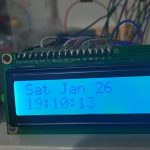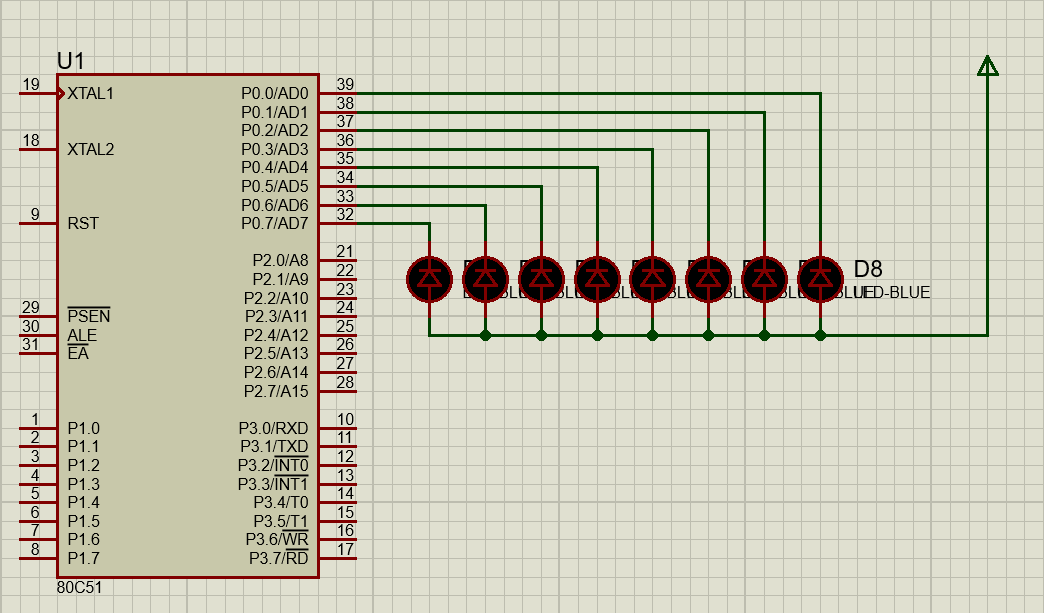In telecommunication, Hamming codes are a family of linear error-correcting codes. Hamming codes can detect up to two-bit errors or correct one-bit errors without detection of uncorrected errors. By contrast, the simple parity code cannot correct errors, and can detect only an odd number of bits in error. Hamming codes are perfect codes, that is, they achieve the highest possible rate for codes with their block length and minimum distance of three.Richard Hamming invented Hamming codes in 1950 as a way of automatically correcting errors introduced by punched card readers. In his original paper, Hamming elaborated his general idea, but specifically focused on the Hamming code which adds three parity bits to four bits of data.
编码原理比较简单,这里直接给出实现的代码
hamming.h
/*
// Last-Modified:2019-1-25 11:07:21
// Copyright (C)2019 SENCOM <sencom1997@outlook.com>
//
// This program is free software; you can redistribute it and/or
// modify it under the terms of the GNU General Public License
// as published by the Free Software Foundation; either
// version 3 of the License, or (at your option) any later version.
//
// This program is distributed in the hope that it will be useful,
// but WITHOUT ANY WARRANTY; without even the implied warranty of
// MERCHANTABILITY or FITNESS FOR A PARTICULAR PURPOSE. See the
// GNU General Public License for more details.
//
// You should have received a copy of the GNU General Public License
// along with this program; if not, write to the Free Software
// Foundation, Inc., 675 Mass Ave, Cambridge, MA 02139, USA.
*/
#ifndef HAMMING_H
#define HAMMING_H
#include "string.h"
#include "stdio.h"
#include "math.h"
#include "stdlib.h"
#define TRUE 1
#define FALSE 0
#define MAX_HAM_CHECK_LEN 32 //最大校验位个数
#define MAX_HAM_CODE_LEN 256 //最大汉明码长度
/*
汉明码校验位个数(k)应满足:
2^k >= n+k+1
其中 n 为源码长度
*/
const char* encode(const char* src_code); //编码, 返回汉明码
int is_error(const char* ham_code); //判断是否有错, 若有错返回错误位置,若无错返回 0
const char* check_error(const char* ham_code); //校验错误,返回正确的汉明码
const char* decode(const char* ham_code); //解码(带校验)
#endif
hamming.cpp
/*
// Last-Modified:2019-1-25 11:07:21
// Copyright (C)2019 SENCOM <sencom1997@outlook.com>
//
// This program is free software; you can redistribute it and/or
// modify it under the terms of the GNU General Public License
// as published by the Free Software Foundation; either
// version 3 of the License, or (at your option) any later version.
//
// This program is distributed in the hope that it will be useful,
// but WITHOUT ANY WARRANTY; without even the implied warranty of
// MERChamTABILITY or FITNESS FOR A PARTICULAR PURPOSE. See the
// GNU General Public License for more details.
//
// You should have received a copy of the GNU General Public License
// along with this program; if not, write to the Free Software
// Foundation, Inc., 675 Mass Ave, Cambridge, MA 02139, USA.
*/
#include "hamming.h"
const char *encode(const char *src_code)
{
int src_len = strlen(src_code);
int ham_len;
int i,c,b,h;
int n; //通用计数器
char *ham_code = (char *)malloc(sizeof(char)*MAX_HAM_CODE_LEN);
const char *ps = src_code;
for(i = 0; i < MAX_HAM_CHECK_LEN; i++)
{
if(pow(2,i)-i >= src_len+1)
break;
}
if(i == MAX_HAM_CHECK_LEN)
return "OVERFLOW";
ham_len = i + src_len;
for(h = 0 ; h < ham_len ; h++)//将源码放到汉明码中正确的位置上
{
ham_code[h] = 'c'; //此位置为校验位用 'c' 标记
for(c = 0 ; c < i ; c++)
{
if(pow(2,c) == h+1)
break;
}
if(c == i)
ham_code[h] = *ps++;
}
int each_h;
for(c = 0; c < i; c++) //将校验码放到汉明码中正确的位置上(使用配偶原则)
{
b = -1; //初始化 b
for(h = 0; h < ham_len; h++)
{
each_h = h+1;
for(int k = 0; k < c; k++) each_h = each_h >> 1;
if( each_h % 2 == 1 && ham_code[h] != 'c')
{
if(b == -1) //b第一次赋ham_code[]值
b = ham_code[h]-48;
else
b = b ^ (ham_code[h]-48);
}
}
for(n = 0; n < ham_len; n++)//将 ham_code[] 中 ‘c’ 替换成相应的校验码
{
if(ham_code[n] == 'c')
{
ham_code[n] = b+48;
break;
}
}
}
ham_code[ham_len] = '\0';
return ham_code;
}
int is_error(const char* ham_code)
{
int ham_len = strlen(ham_code);
int k,n,p,h,c;
int error_code = 0; //存放错误码(十进制)
int pn[MAX_HAM_CHECK_LEN];//存放错误码(二进制)
for(k = 2; k < MAX_HAM_CHECK_LEN; k++)//计算出校验位的个数 k
{
if(pow(2,k) >= ham_len + 1)
break;
}
int each_h;
for(c = 0; c < k; c++) //将校验码放到汉明码中正确的位置上(使用配偶原则)
{
p = -1; //初始化 p
for(h = 0; h < ham_len; h++)
{
each_h = h+1;
for(int k = 0; k < c; k++) each_h = each_h >> 1;
if( each_h % 2 == 1)
{
if(p == -1)//p第一次赋 ham_code[] 值
p = ham_code[h]-48;
else
p = p ^ (ham_code[h]-48);
}
}
pn[c] = p;
}
c = 0; //位移计数器初始化
for(n = 0; n < k; n++)//将 pn[] 中二进制错误码转十进制存入 error_code 中
error_code += pn[n] << c++;
return error_code;
}
const char* check_error(const char* ham_code)
{
int error_index = 0;
char *true_ham_code = (char *)malloc(sizeof(char)*MAX_HAM_CODE_LEN);
strcpy(true_ham_code,ham_code);
if( error_index = is_error(ham_code) ){
true_ham_code[error_index-1] == '0' ? true_ham_code[error_index-1] = '1' : true_ham_code[error_index-1] = '0';
return true_ham_code;
}
else
return true_ham_code;
}
const char* decode(const char* ham_code)
{
char *src_code = (char *)malloc(sizeof(char)*MAX_HAM_CODE_LEN);
const char *true_ham_code;
int ham_len = strlen(ham_code);
int i=0,h,k,c;
if(is_error(ham_code) ) //检查是否有错并纠正错误位
true_ham_code = check_error(ham_code);
else
true_ham_code = ham_code;
for(k = 2; k < MAX_HAM_CHECK_LEN; k++)//计算出校验位的个数 k
{
if(pow(2,k) >= ham_len + 1)
break;
}
for(h = 0 ; h < ham_len ; h++) //从正确的汉明码中分解出源码
{
for(c = 0 ; c < k ; c++)
{
if(pow(2,c) == h+1)
break;
}
if(c == k)
src_code[i++] = true_ham_code[h];
}
src_code[i] = '\0';
return src_code;
}test.cpp
#include "hamming.h"
int main()
{
const char *ham_code;
const char *src_code;
ham_code = encode("0101");
puts(ham_code);
src_code = decode("0100101");
puts(src_code);
return 0;
}
如果有错误需要更新的话,我会在我的GitHub上更新!
传送->GitHub











